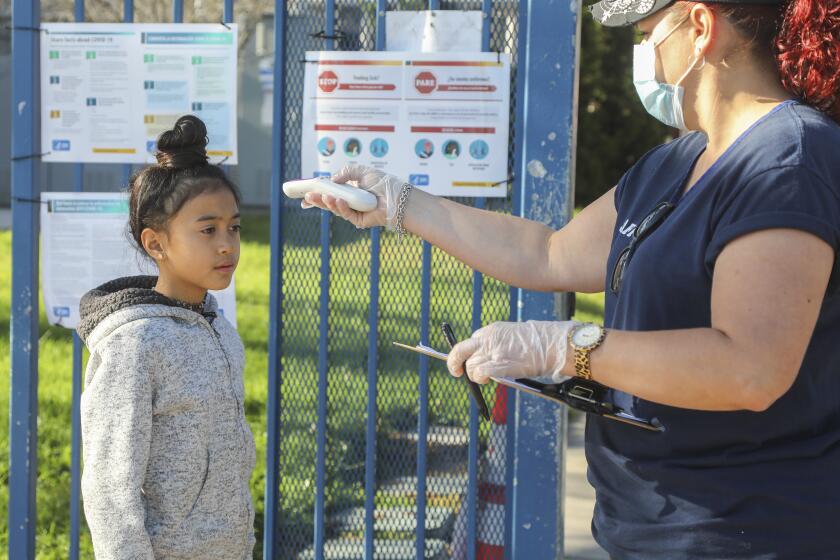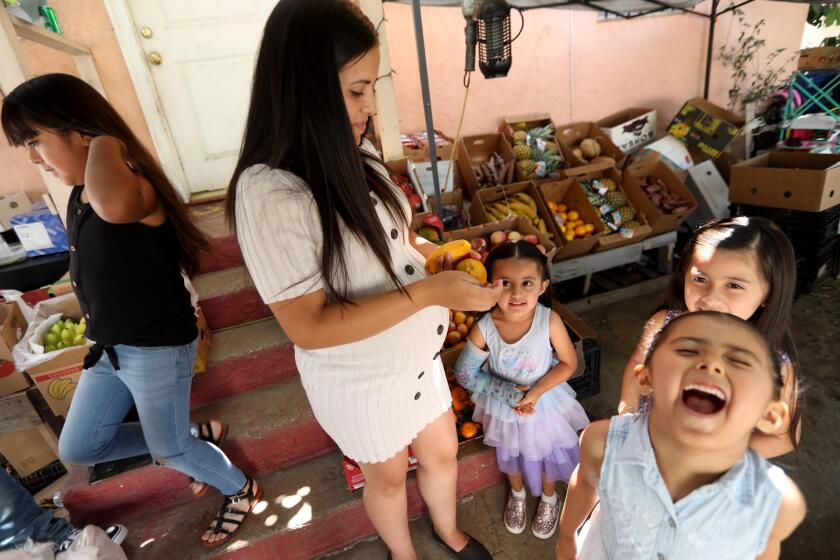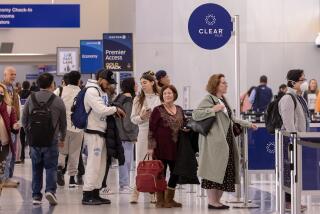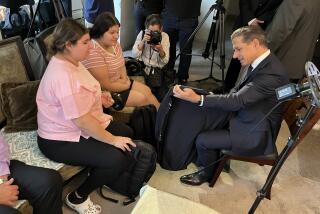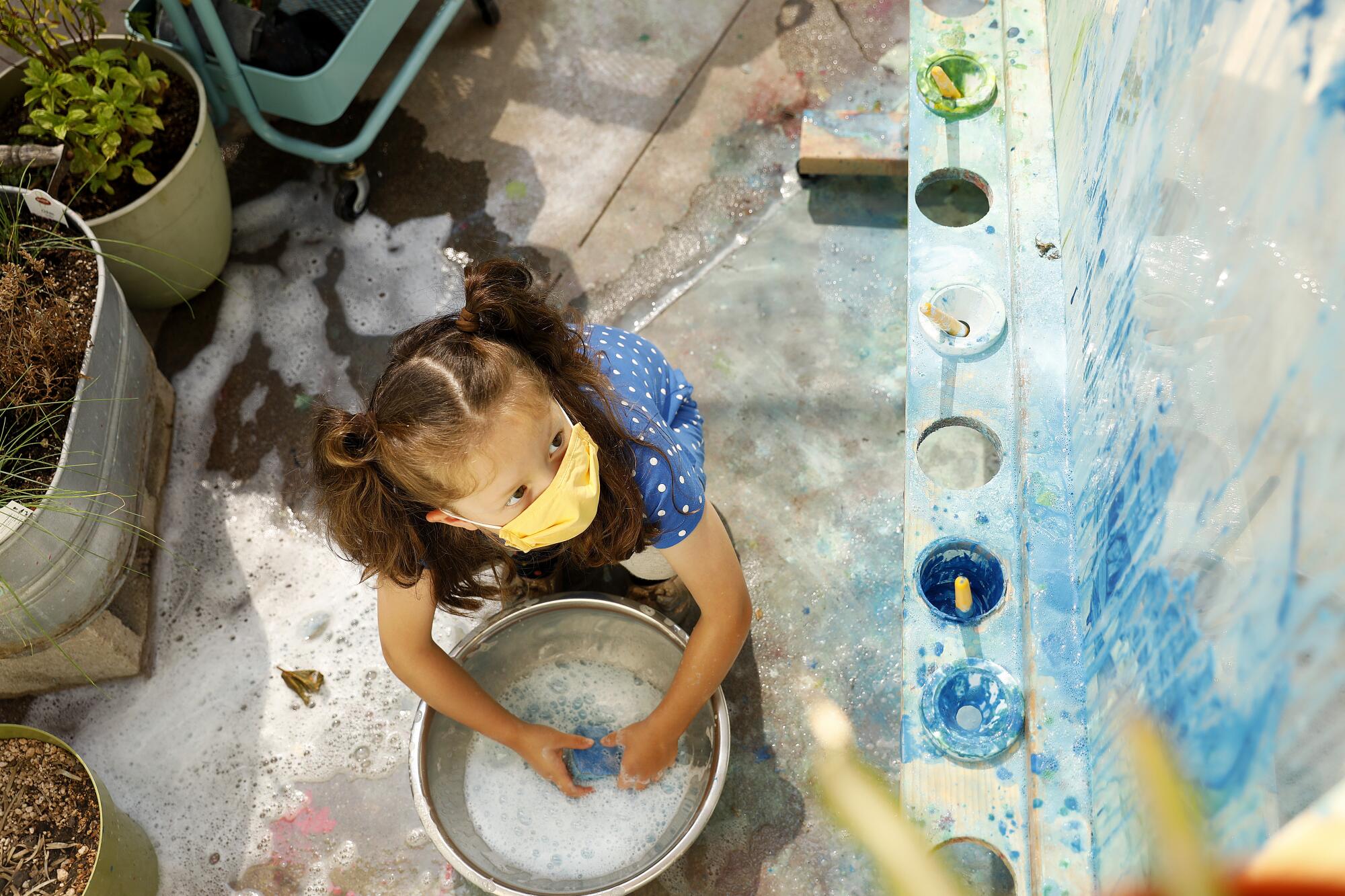
- Share via
The infection starts with a sniffle. Next comes a barking cough. Soon, there’s a fever, maybe vomiting and diarrhea, possibly an ear infection or tonsillitis or pink eye.
These are common symptoms in preschool, where viral outbreaks are as ubiquitous as finger paints and apple juice. In a typical year, an otherwise healthy preschooler will bring home 12 to 18 upper respiratory infections — at least six to eight colds, two cases of croup and, more often than not, a bout of the flu, among others.
But 2020 is not a typical year, and SARS-CoV-2 — the technical term for the novel coronavirus — is no day-care germ. Now, with hundreds of large centers reopening across California, many families are asking: Is preschool safe?
“That’s the big question,” said Dr. Nava Yeganeh, a pediatric infectious-disease specialist at UCLA and a preschool mom. “We can’t mitigate risk down to zero, but it seems like in general preschools have done very well.”
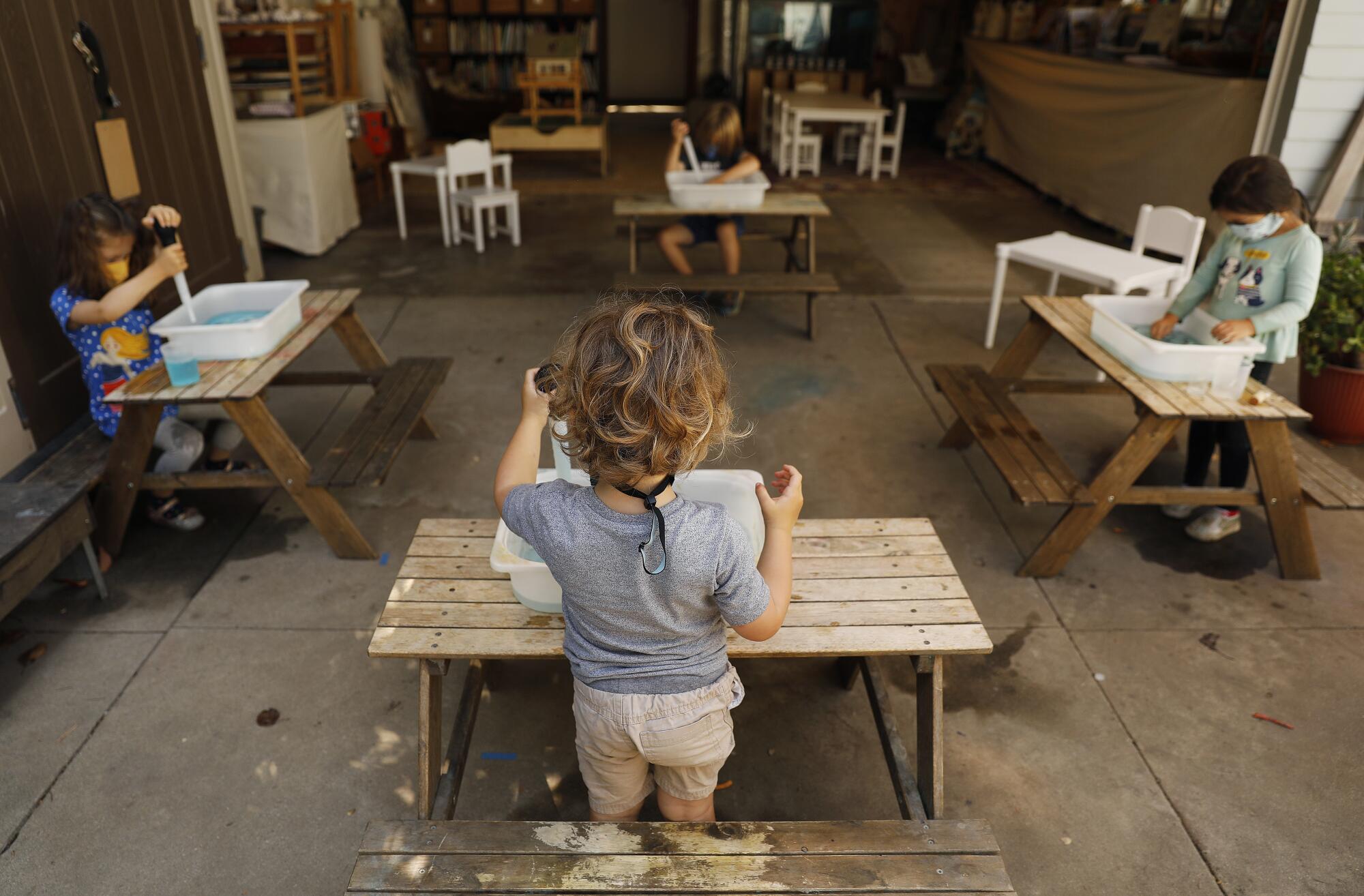
Though scientists can still only guess at why, a growing body of evidence suggests preschoolers are uniquely resilient to the novel coronavirus. Recent studies from the U.S., U.K., Singapore and Australia, among others, suggest they are far less likely to contract and spread the illness than older children and dramatically less likely to get sick from it than children even slightly older or younger.
“This is the most bizarre virus,” said Dr. Naomi Bardach, a professor of pediatrics at UC San Francisco. “Normally we think about kids getting coughs and colds all the time and giving it to each other all the time, and [giving] it to their teachers. In this disease, it’s a totally different model.”
Hundreds of thousands of essential workers have kept their kids in child care during the pandemic and, so far, these centers haven’t been big disease spreaders.
Los Angeles County recorded half the number of infections in children younger than 5 compared with those ages 5 to 11. Nationally, just 8.7% of children hospitalized with COVID-19 in the U.S. were 2 to 4 years old, while more than 40% were 12 to 17, and almost 20% were newborns less than 3 months old, an Aug. 7 study by the Centers for Disease Control and Prevention indicated.
Children 18 and younger make up about 0.01% of patients hospitalized with the virus and 0.0005% of associated mortalities, data show. About one and a half times as many children died of the 2018-19 flu, though that flu killed 80% fewer people overall.
Those statistics are even more striking because, unlike infants and older children, hundreds of thousands of preschoolers have been in their classrooms since March. In California alone, 33,773 preschools and day cares are open — almost 80% of the pre-pandemic total — yet state data show that only about 450 students have tested positive for the virus in the last six months. Even when caregivers and parents are counted, the overwhelming majority of preschools and day-care centers have not reported a single case.
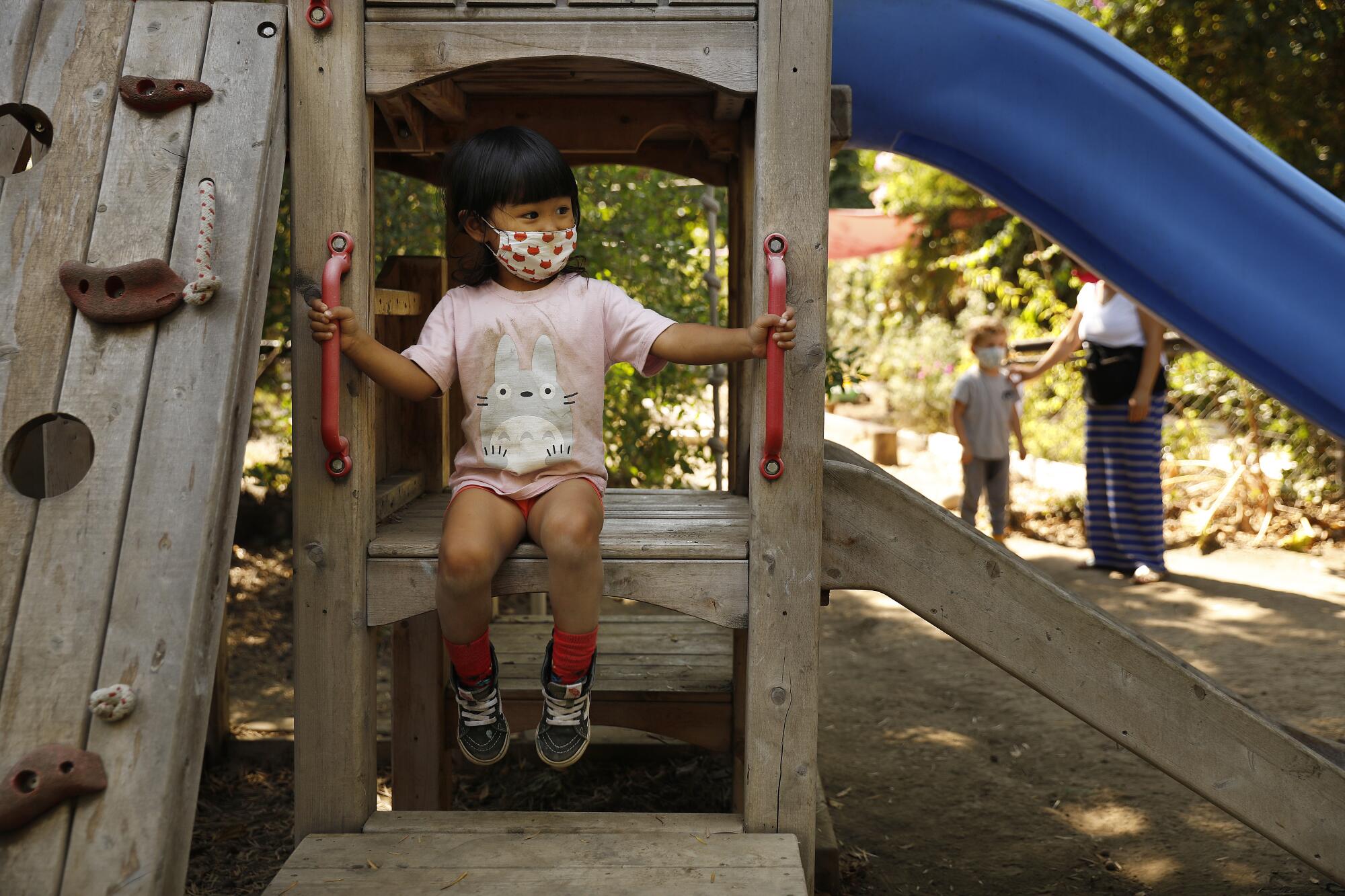
“California has been really very cautious and very thoughtful,” Yeganeh said. “We are being very strict and trying to mitigate risk as much as possible.”
In fact, California has instituted some of the most stringent viral containment measures in the country, which is why experts believe many fewer preschoolers have fallen sick here than in Texas or Florida, despite those states’ smaller populations and fewer open child-care centers.
Here, parents are barred from the classroom, rugs and soft toys are frowned upon, and children 2 and older are expected to wear masks at all times.
“We had them practice at home so it wasn’t their first experience with wearing a mask,” said Paola Cervantes, executive director of Voyages Preschool in Mar Vista, who reconfigured her classrooms so that children could spend the whole day outside. “They tell us at this point, ‘I touched my mask, can I have hand sanitizer?’ [or] ‘I licked it, can I have a clean one?’”
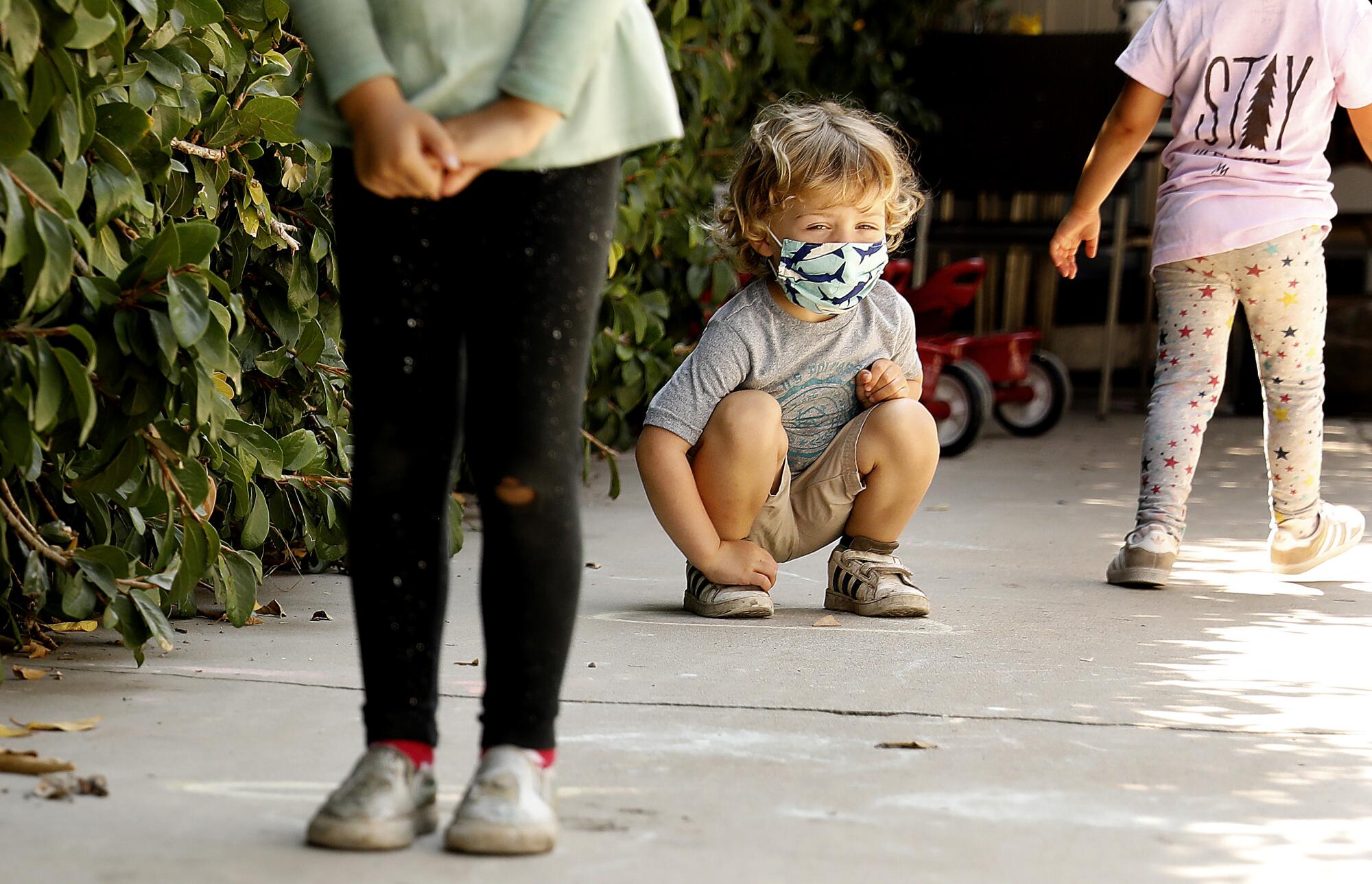
The toddlers playing in Voyages’ outdoor “mud kitchen” on a recent sunny morning seemed to have no trouble keeping their masks on or sharing their excitement from six feet apart — to them, Cervantes explained, masks have become like helmets or seat belts, beyond reproach. Students quickly learned to “blow hugs” to one another and stand in distanced chalk hearts while they wait to wash for lunch. Few seem to notice that the bathroom is sanitized each time they use it or that toys disappear the moment they drop them.
“We have a lot of the same materials, so we split them,” Cervantes said. “It’s kind of like TV magic — while these are disinfecting, I bring the other ones out.”
Le Petit Gan in Beverly Hills has taken this practice one step further since reopening in May. Toddlers rush to deposit their Magna-Tiles and plastic dinosaurs into the “dirty box” the moment they’ve finished playing with them.
“They go in the oven,” 3-year-old Henry explained as he tossed plastic vegetables into a pot at the preschool’s play kitchen. “And then they go in the washing machine.”
So far, the precautions appear to be working. In L.A. County, more than 7,000 child-care facilities are open and fewer than 100 students have tested positive for the coronavirus since the start of the pandemic. Among staff, that number is closer to 150.
The ratio is similar statewide. Only a fraction of a percent of the child-care workforce has contracted the virus, yet infected teachers far outnumber infected students, although students are many times more numerous.
“What we don’t know from the data is whether, or the extent to which, cases have been transmitted among adults in child-care settings, or whether the adults have been exposed elsewhere,” said Lea Austin, director of the Center for the Study of Child Care Employment. (Experts say child-to-adult transmission appears rare.)
Still, many parents wavered. Unlike in some other states, California’s preschools and day cares are open to all families, not just those of front-line workers. Statewide, 6% of open programs serve no essential workers at all, and many parents who can work from home have debated keeping their preschoolers home with them, especially after large school districts across the country announced they would not return to classrooms in the fall.
“When LAUSD said they were not going to open, that was a huge trigger for parents,” said Luisa Donati, executive director of Cassidy Preschool in Santa Monica and head of the Los Angeles Preschool Partnership, a consortium of 150 local preschools. “I had to explain to them, when state officials say ‘schools,’ you think they’re talking about your preschooler, but to the government, ‘school’ is K-12.”
About 10% of Donati’s former students will be learning remotely this fall. Le Petit Gan and Voyages also offer remote programming to children whose parents say they will not go back until they are vaccinated.
Though rare, preschool outbreaks do happen. In the Singapore study, 16 teachers were infected at a single preschool, yet 77 children in their care all tested negative for the virus. (Eight of those children were symptomatic, meaning they probably had one of the 12 to 18 upper respiratory infections that preschoolers typically cycle through.)
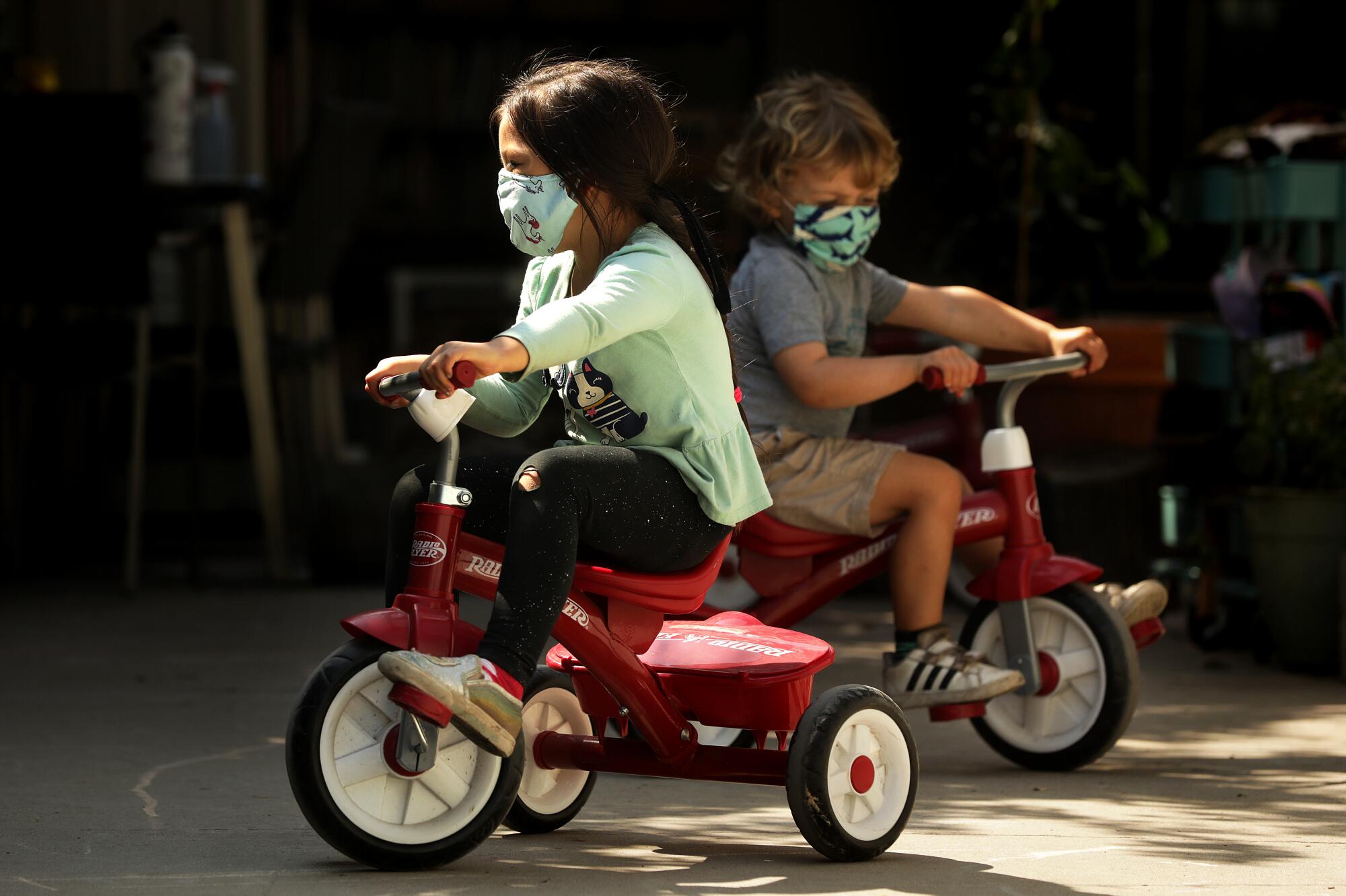
Scientists know young children can catch SARS-CoV-2, and there’s evidence that those who show symptoms may have the same viral load as adults. So why don’t more of them get sick? And why don’t they spread it — either to one another or to caregivers — the way they spread colds and flus?
Some experts think the answer may lie in ACE-2, an enzyme sometimes likened to a “keyhole” through which the coronavirus enters the body. Children younger than 10 have less of the enzyme in their nasal passages, which could be a source of their resistance.
Others think that the virus may be more prevalent in small children than we realize but that they may not be big enough to spread it through droplets or strong enough to aerosolize it when they cough and sneeze.
Though the cause may still be a mystery, the effect is increasingly clear, experts say. There is a growing consensus among researchers that young children aren’t coronavirus “super-spreaders” and that their return to classrooms is unlikely to change the course of the pandemic, even in places where overall transmission is high.
“The real question is, if we let preschools stay open, are we increasing the risk of transmission beyond what would normally happen,” Bardach said. “And the data does not suggest that.”
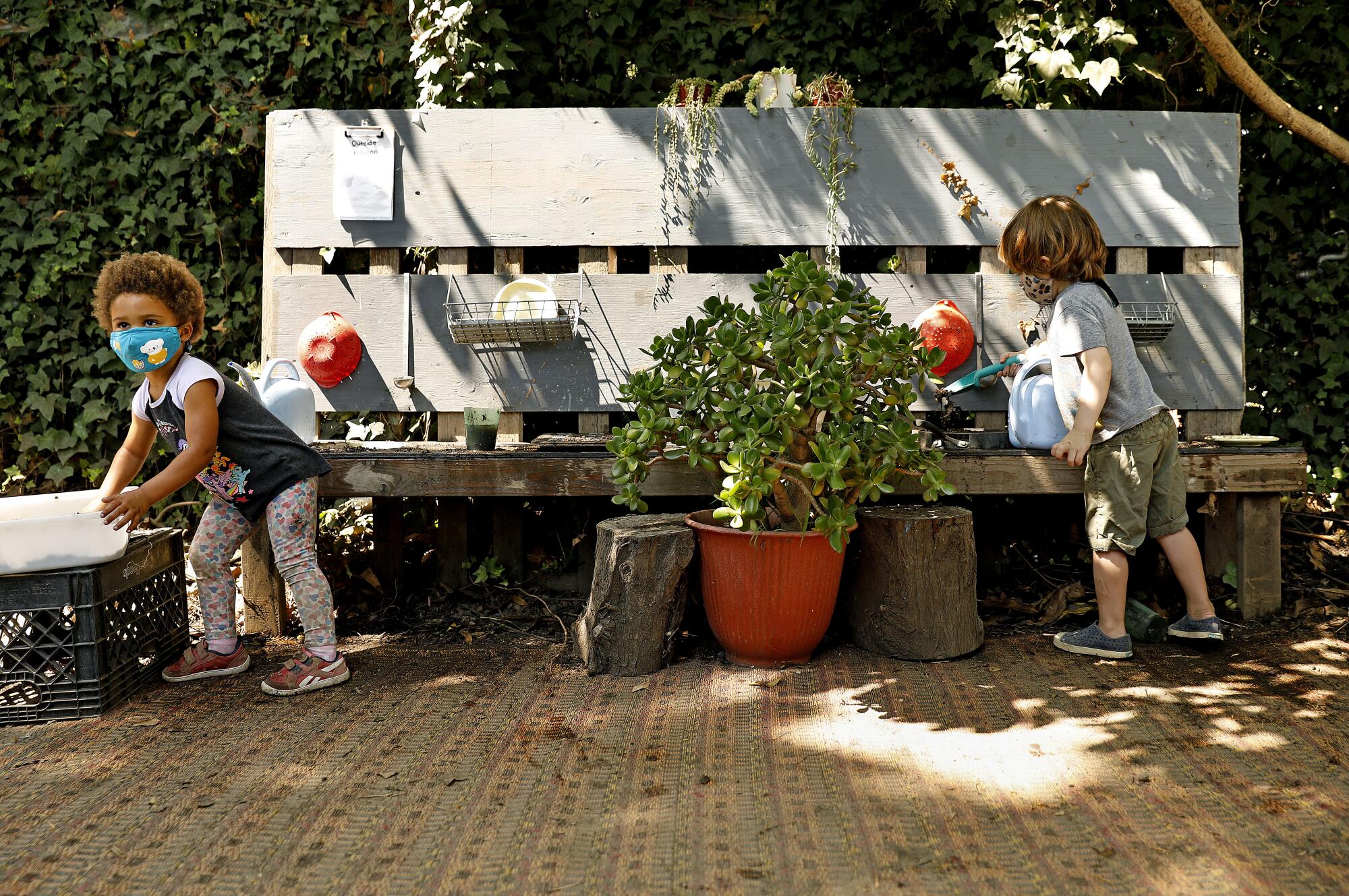
Still, many parents fear the worst, especially since the emergence of the terrifying Kawasaki-like multisystem inflammatory syndrome in children, or MIS-C.
“There was a lot of concern around that,” Donati said.
But here, too, experts say fears may be inflated.
MIS-C “got reported a lot because it was new and it was scary, but it’s very, very, very rare,” Bardach said. “There are kids that get into the ICU with MIS-C, but our therapies are good enough that it doesn’t lead to death.”
So far, just 94 of the more than 180,000 Americans who have died of COVID-19 have been minors. As with hospitalizations, the majority have been in older children, though national mortality data do not distinguish between kindergarten children and teenagers.
MIS-C, though still vanishingly rare, has also appeared to cluster among slightly older children. Almost all of them have recovered, experts said.
“There is treatment available,” Yeganeh said. “If a child has any of the symptoms — prolonged fever, red eyes, abdominal pain — they should come in.”
Far more worrying than the syndrome’s prognosis is its prevalence in children of color, who make up a disproportionate number of those hospitalized with COVID-19, Yeganeh said.
As many private preschools prepare to reopen for the school year, many of California’s poorest and neediest children are stuck at home, waiting for public preschools to reopen or offer distance learning, which is far from ideal for a 4-year-old.
People of color are “overrepresented in front-line occupations” where they are more exposed to the virus and more likely to bring it home to their children, the CDC noted. Black and Latino children in the Aug. 7 study were also more likely than white ones to have at least one underlying medical condition.
But those inequities are only amplified by keeping preschoolers out of classrooms where children of essential workers have been cared for since March and far less than 0.01% of students have been sickened, Yeganeh said.
“Studies have suggested that distance learning does not work as well for younger kids,” and its failures are compounded for those who most need it, the doctor said. “The children who are most vulnerable are being left behind.”
More to Read
Sign up for Essential California
The most important California stories and recommendations in your inbox every morning.
You may occasionally receive promotional content from the Los Angeles Times.

